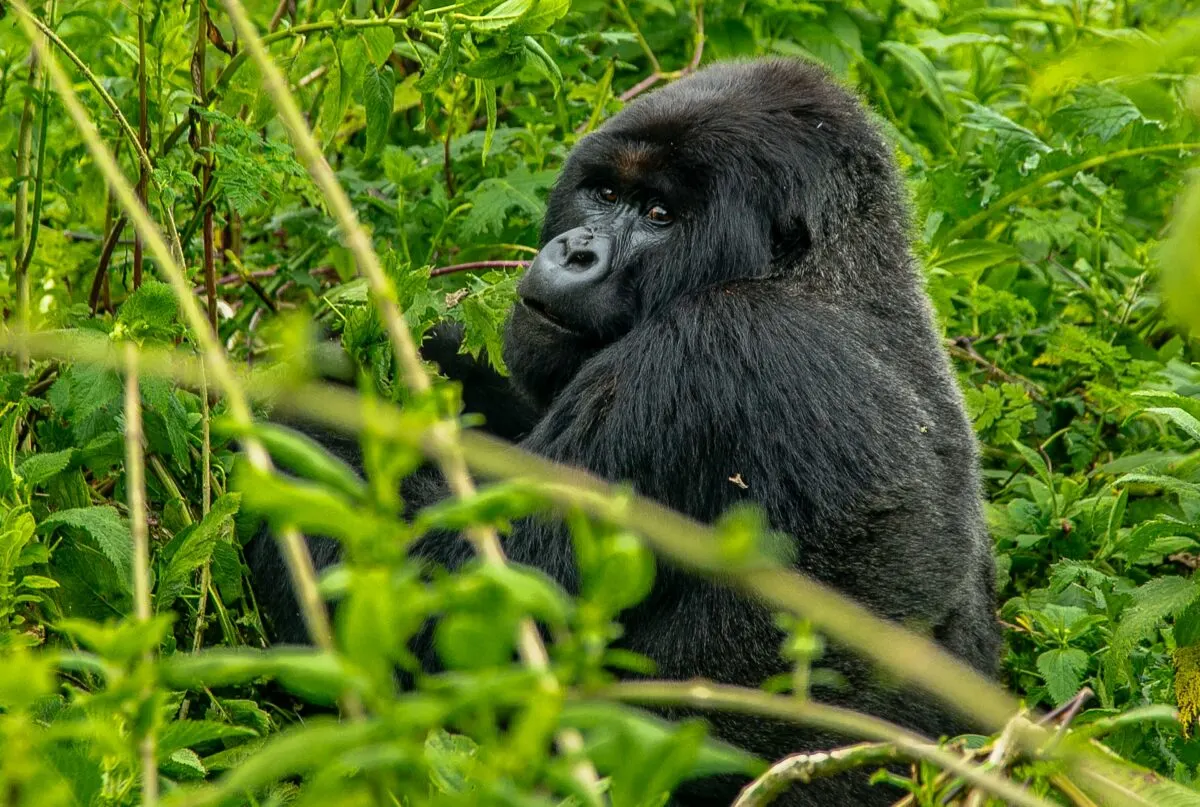Comparing Gorilla vs. Cape Buffalo – Learn Their Differences Here
Are you curious about the differences between Gorillas and Cape Buffaloes? If that is true, then you have reached the right place! With this guideline, we’ll be delving into the two creatures’ respective appearances, behaviors, habitats, and much more. From their intimidating builds to surprising similarities that might surprise you — we’re here to share everything there is to know about these majestic animals.
So whether you’re a wildlife enthusiast or want something interesting to read — grab your coffee and settle in as we embark on our journey of learning all about Gorilla vs. Cape buffalo!
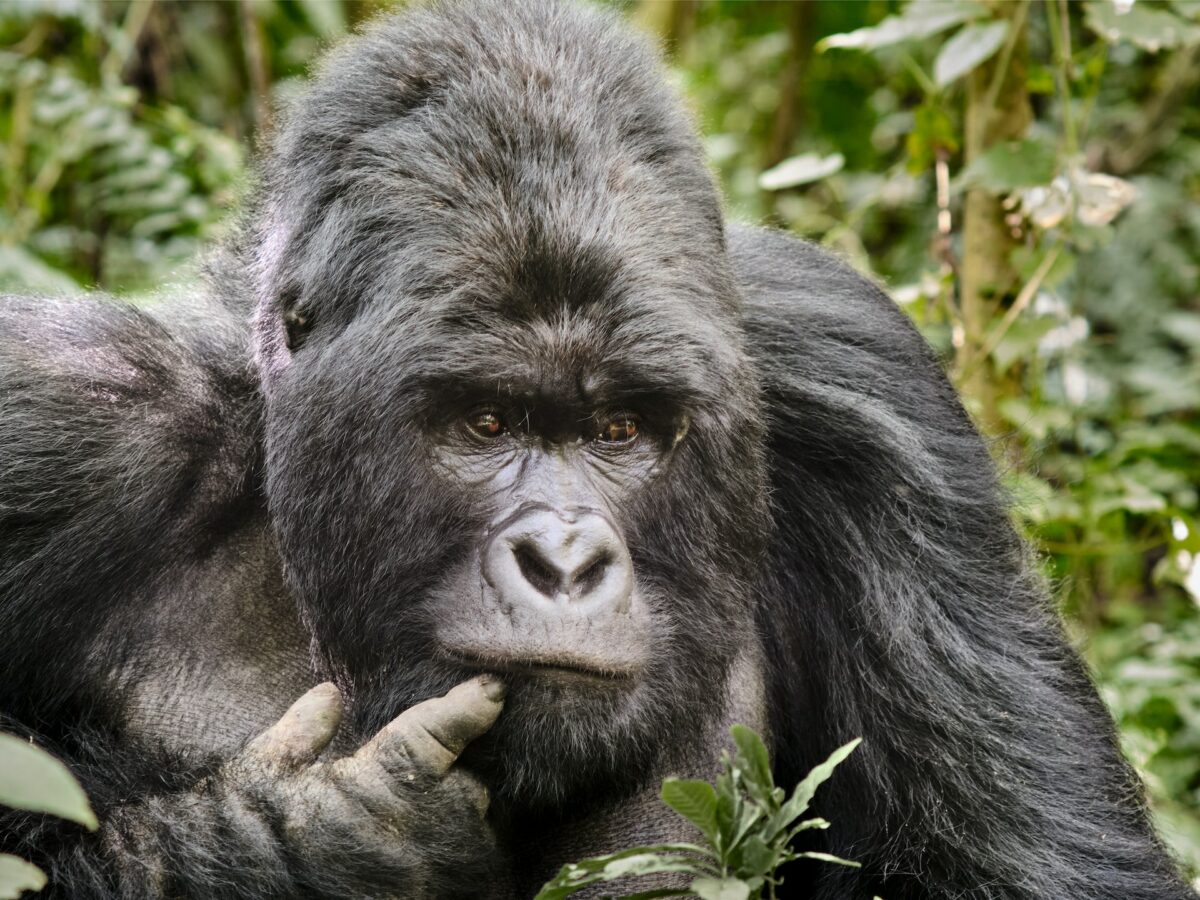
Want to jump ahead? Click below
Comparison Table
| Gorilla | Cape Buffalo | |
| Habitat | African rainforests | African savannas and grasslands |
| Size | 4-6 feet tall, 300-500 pounds | 4-6 feet tall, 900-1800 pounds |
| Diet | Mostly herbivorous, but may eat insects and small animals | Grazes on grasses but also eats leaves and shrubs |
| Physical Characteristics | Muscular with a broad chest and powerful arms | Large and firm with curved horns and a massive head |
| Strength | Can lift over 2,000 pounds | One of the strongest land animals, able to fight off predators and charge at high speeds |
| Behavior | Solitary, but may live in small groups | Live in large herds, with males competing for dominance |
| Threats | Poaching, habitat loss, and disease | Habitat loss, hunting, and human-wildlife conflict |
| Conservation Status | Endangered or critically endangered | Least concern, but some subspecies are vulnerable or near threatened |
An Introduction To The Two Animals – Their Physical Traits And Typical Habitats
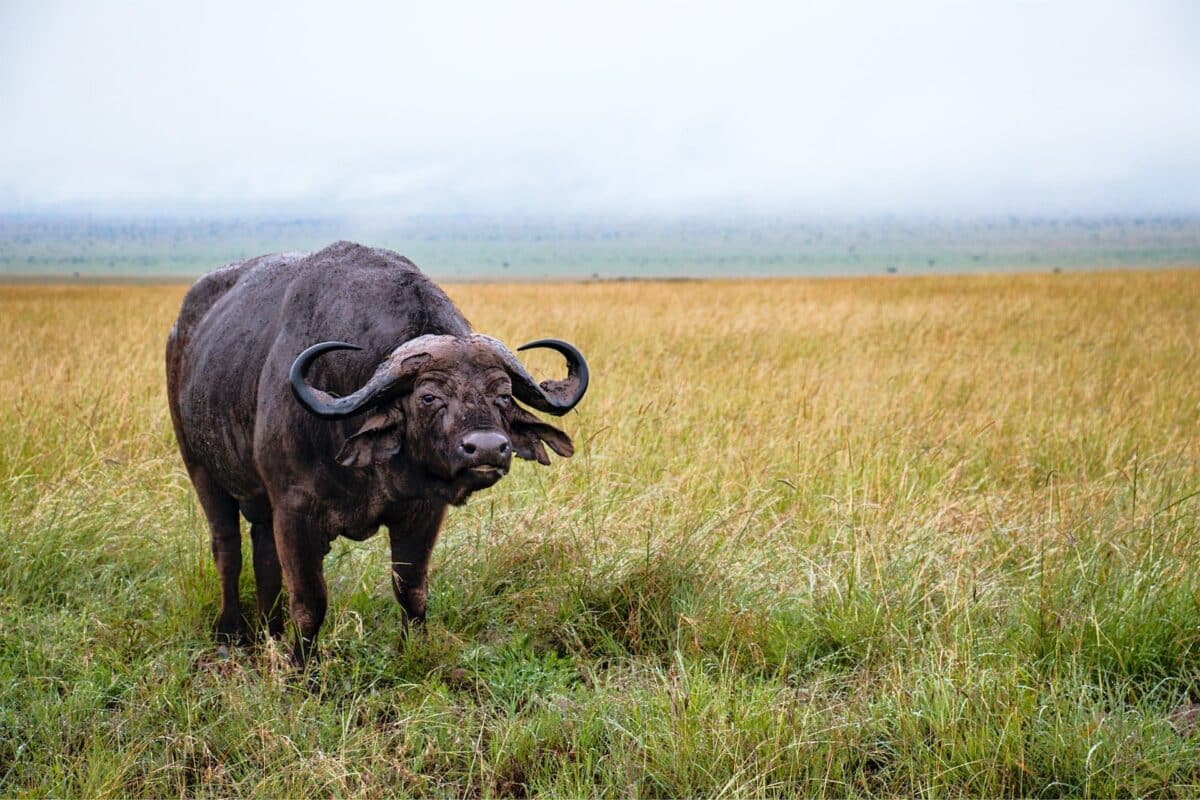
The gorilla and the Cape buffalo are two fascinating animals often found in the savannas and forests of Africa. These animals possess distinct physical characteristics that differentiate them from other creatures.
- Gorillas are known for their impressive physique: broad shoulders, muscular arms, and a massive chest. Their black fur and intense gaze are other characteristics that allow them to blend seamlessly into the dense jungles they call home.
- On the other hand, Cape buffaloes have a stocky, robust frame with a thick, black coat resistant to insect bites and the sun’s harmful rays. These formidable beasts are known for their sharp horns, which they use for self-defense against predators.
Overall, the gorilla and Cape buffalo are two intriguing animals with distinct physical traits that have enabled them to thrive in their typical African habitats.
The Differences Between Gorillas And Cape Buffaloes
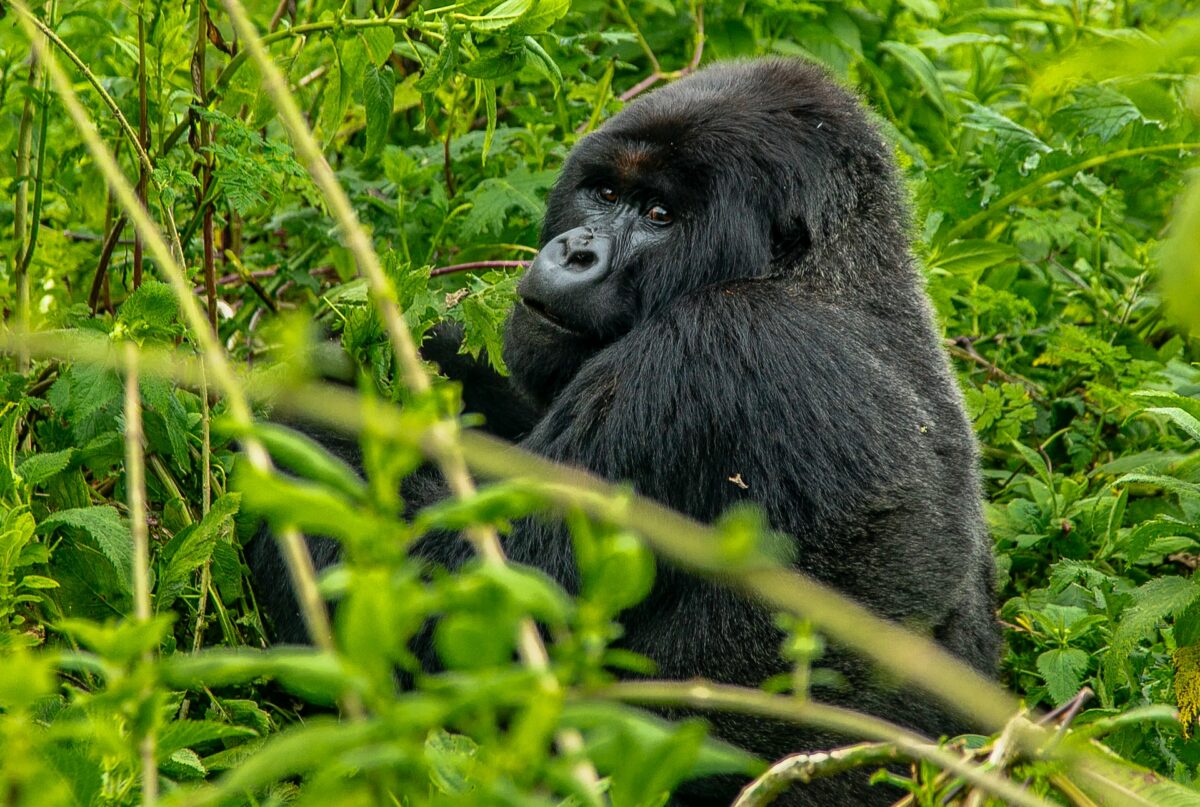
There are clear differences between gorillas and Cape buffaloes regarding size, speed, and strength.
- Size:
Cape buffaloes are generally larger than Gorillas. Adult male gorillas weigh up to 400 pounds, while adult male Cape buffaloes typically weigh between 700-1,000 pounds.
- Speed:
In terms of speed, Cape buffaloes are faster than gorillas. Cape buffaloes can run up to 35 mph, while gorillas have been recorded running at a maximum speed of 20 mph.
- Strength:
Both gorillas and Cape buffaloes are powerful animals but in different ways. Gorillas have tremendous upper body strength, which is necessary for climbing and swinging through trees.
Furthermore, they possess the capability to hoist hefty objects that outweigh them by several times. On the other hand, Cape buffaloes have powerful leg muscles that enable them to charge at incredible speeds and deliver devastating blows to their enemies.
How Each Animal Defends Itself In A Fight
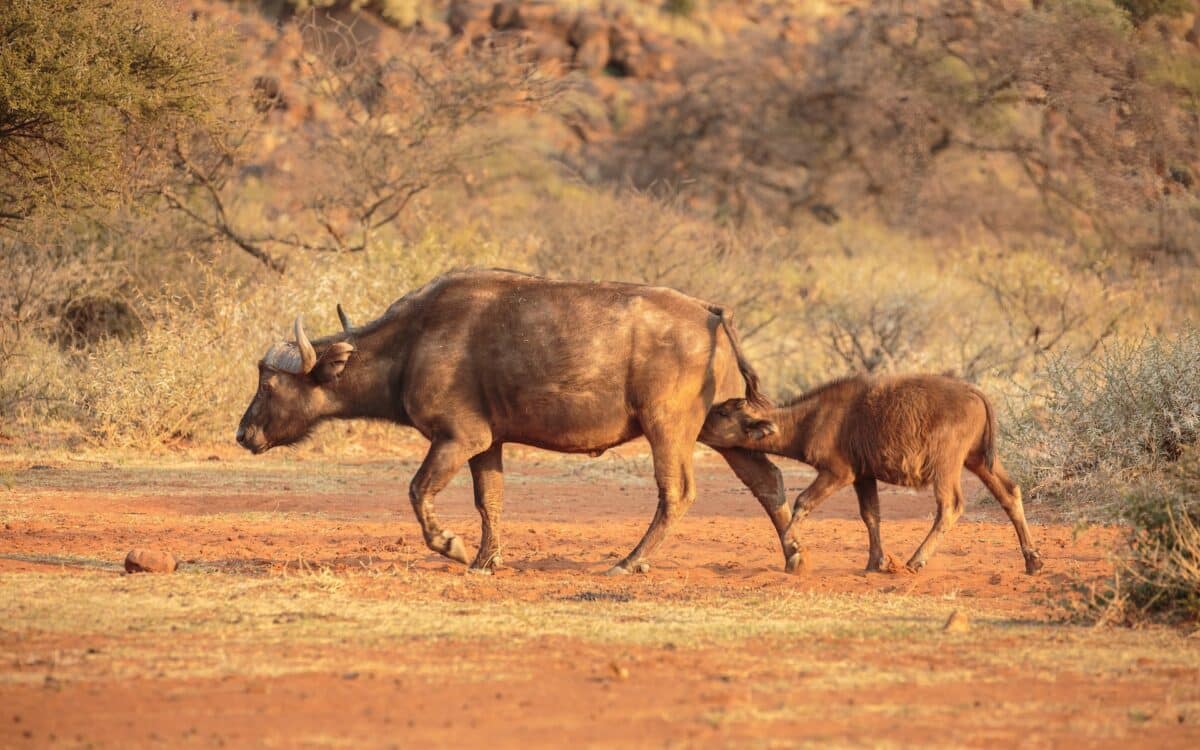
Gorillas and Cape buffaloes have different natural weapons and strategies to defend themselves.
- Gorillas:
Gorillas use their large, muscular arms and legs to intimidate their opponent when threatened. They may also beat their chest and vocalize loudly to show their strength. If a competitor does not back down, gorillas may engage in physical combat by charging at their opponent, striking with their hands, or biting their teeth.
- Cape Buffaloes:
Cape buffaloes are recognized for their hostile temperament and are prepared to safeguard themselves from predators such as lions and hyenas. They have thick, protective hides and sharp horns that they will use to fend off an attacker. Cape buffaloes will charge at their enemies with incredible force, often goring them with their horns or trampling them with their powerful hooves.
While gorillas and Cape buffaloes have some similarities in their strength, they have differences in size and speed. They also have unique strategies for defending themselves in a fight, relying on different natural weapons to protect themselves from danger. These splendid animals are intriguing to study and constitute a significant aspect of our natural world.
Check out Cape Buffalo Facts.
Comparison Of Diet And Eating Habits
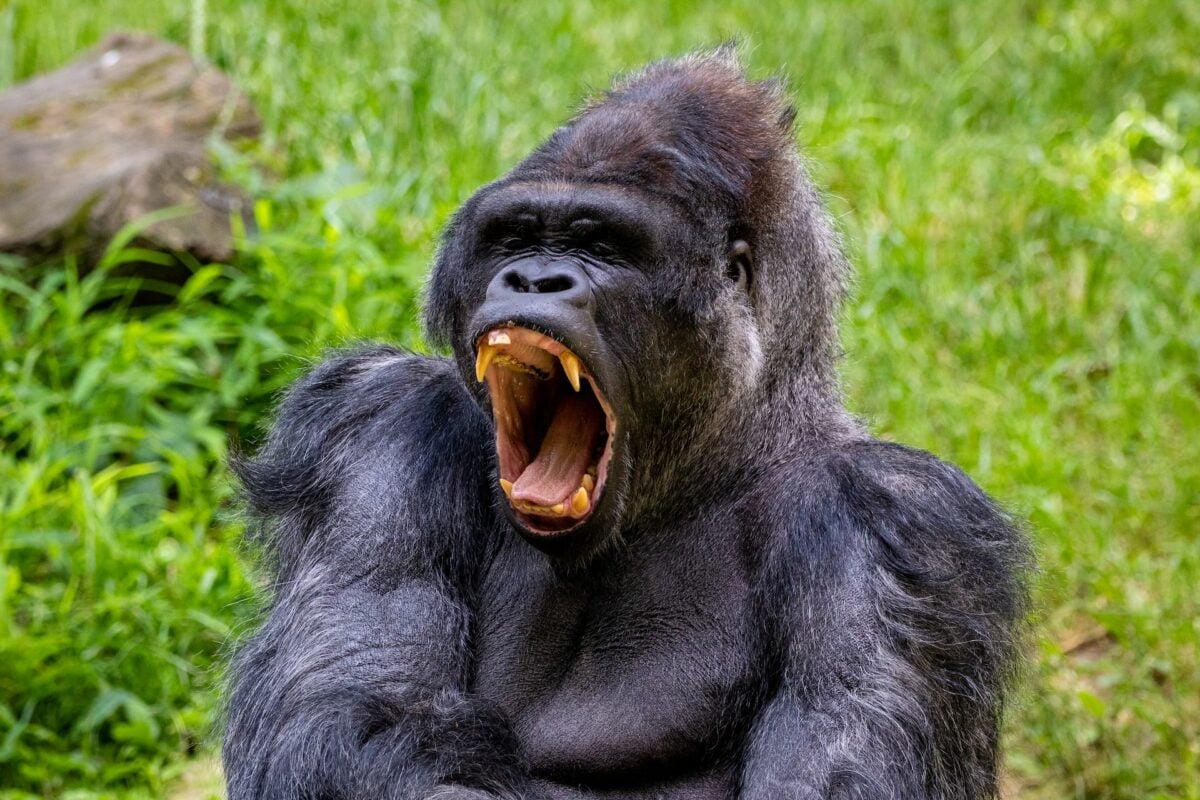
Both gorillas and Cape buffaloes have distinguishable differences in diet and eating habits.
- Gorillas are mainly herbivorous, and their nourishment primarily comprises diverse plants’ leaves, stems, and shoots. Additionally, they consume fruits, bark, and flowers. Gorillas possess a unique digestive system that enables them to extract and assimilate all the necessary nutrients and minerals from the plants they consume.
- On the other hand, Cape buffaloes are mainly grazers and eat grasses but will also consume different vegetation types, such as herbs and shrubs. They are known to have a broad, flat jaw structure which is ideal for grazing and breaking down tough plant matter.
Check out Gorilla Strength: How Strong Are Gorillas?
The Similarities In Social Structures
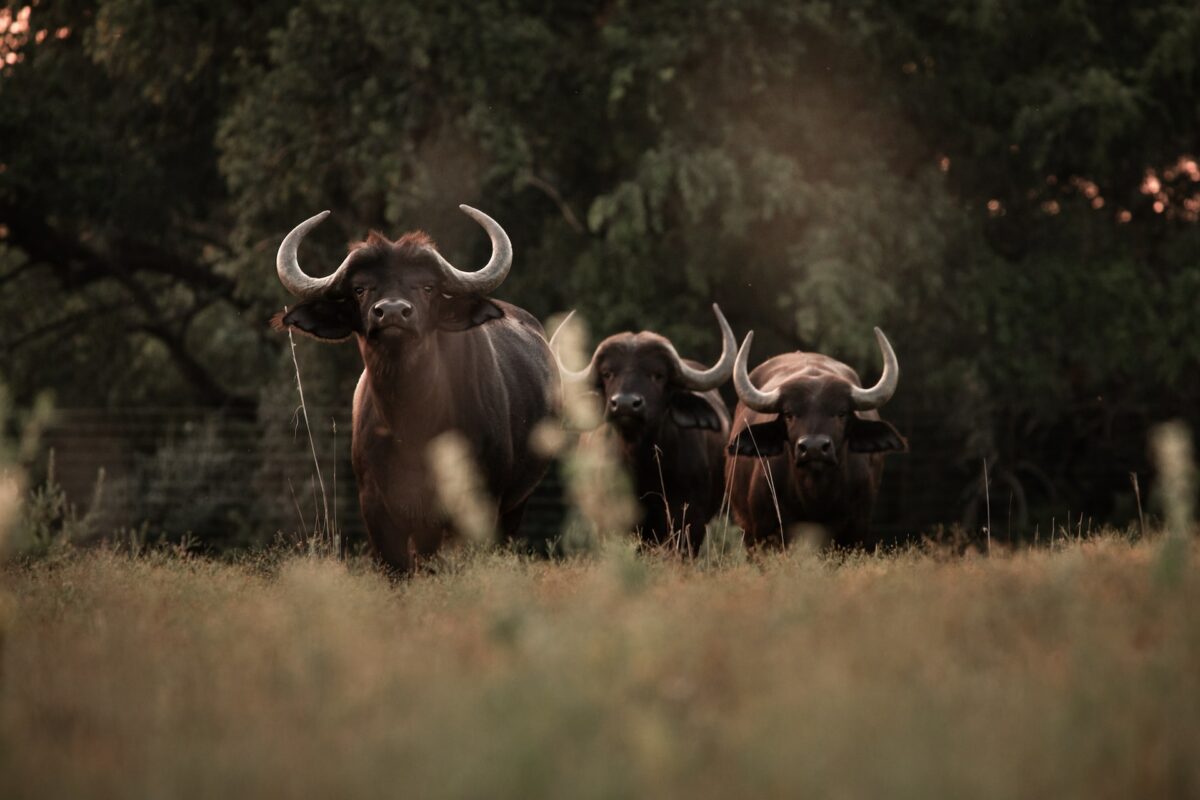
Both gorillas and Cape buffaloes live in complex social structures essential to their survival but differ significantly in their social dynamics.
- Gorillas typically live in groups of 5-20, with the dominant silverback male at the head of the group, while the females and juveniles make up the rest. The group is often called a troop, and a well-defined social hierarchy governs it.
- Nonetheless, Cape buffaloes dwell in herds that vary from a few members to over a hundred.
- Unlike gorillas, where dominance is determined largely by physical prowess, the social dynamics among Cape buffaloes are established by age, size, and personality.
Interesting Facts About Gorillas And Cape Buffaloes

- Gorillas are known to be one of the closest living relatives to humans, with over 98% of their DNA identical to that of humans.
- The largest recorded male gorilla was over 6 feet tall, while the smallest adult male was under 4 feet tall.
- Being accountable for killing hundreds of humans annually, Cape buffaloes are infamous for being among the most dangerous animals in Africa.
- Cape buffaloes have been known to form a defensive circle around their young when threatened and have been observed attacking lions that tried to prey on their young.
Though gorillas and Cape buffaloes may have similar social structures, their diet and eating habits are poles apart. Knowing the unique characteristics of these animals is vital in understanding their behaviors and how they go about their survival. Whether you’re simply curious or an avid wildlife enthusiast, gaining knowledge and insight into the lives and habits of these magnificent animals is an enriching experience.
Check out Protein-Rich Diet Helps Gorillas Keep Lean.
Key Points
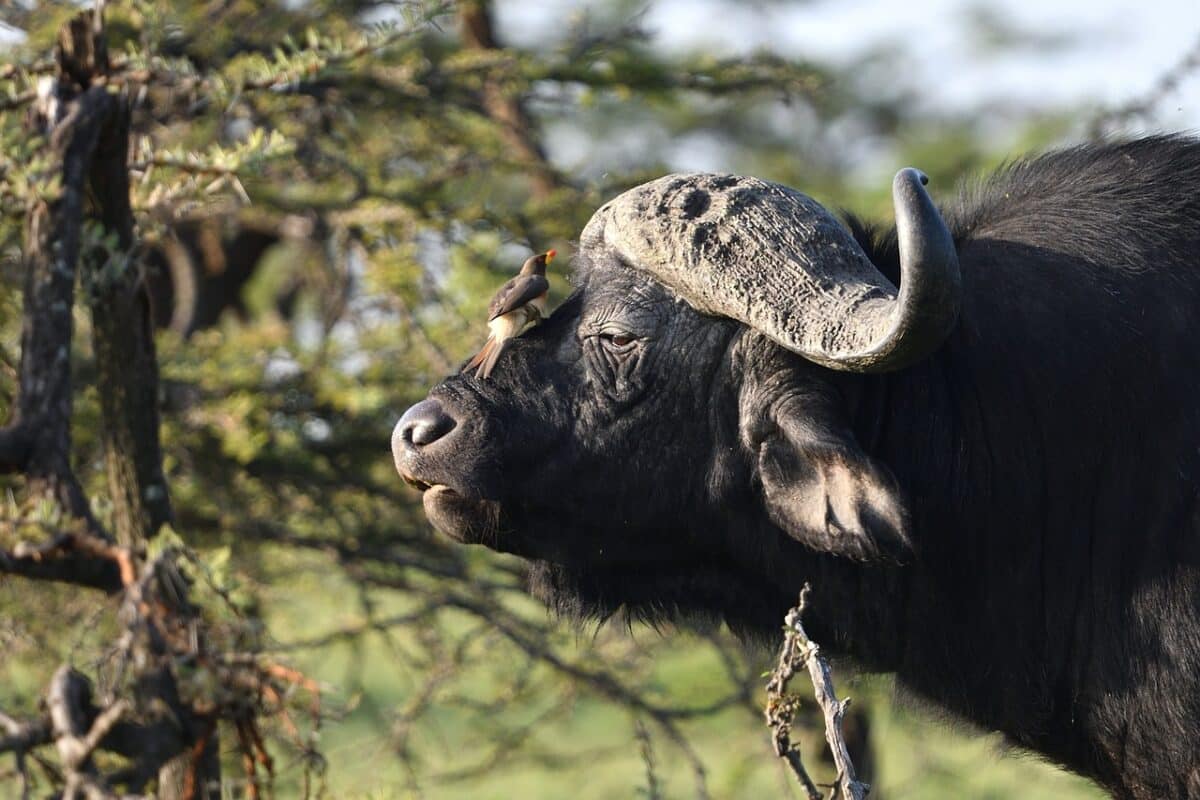
| Gorillas are known for their impressive physique: broad shoulders, muscular arms, and a massive chest. Their black fur and intense gaze are other characteristics that allow them to blend seamlessly into the dense jungles they call home. |
| Cape buffaloes have a stocky, robust frame with a thick, black coat resistant to insect bites and the sun’s harmful rays. These formidable beasts are known for their sharp horns, which they use for self-defense against predators. |
| Gorillas are known to be one of the closest living relatives to humans, with over 98% of their DNA identical to that of humans. |
| Cape buffaloes have been known to form a defensive circle around their young when threatened and have been observed attacking lions that tried to prey on their young. |
| While gorillas and Cape buffaloes have some similarities in their strength, they have differences in size and speed. They also have unique strategies for defending themselves in a fight, relying on different natural weapons to protect themselves from danger. |
Conclusion
As our journey of exploring Gorilla vs. Cape Buffalo ends, we hope you have learned as much as we did along the way! We’ve seen their intimidating builds, looked at their varied behaviors and habitats, and discovered some surprising similarities. Despite these animals being utterly different in the wild, understanding their shared characteristics has been an enlightening experience.
It’s truly unique how much we can learn from nature — but the journey does not have to end here. There are plenty more animals to explore and uncover new knowledge about, so don’t be afraid to dive in and learn more! Thanks for joining us on this Gorillas vs. Cape Buffaloes exploration – until next time!
Thanks for following along with me! I hope you enjoyed reading about the pros and cons of these two jungle kings. Next up is The Biggest Buffalo Ever Recorded, Gorilla Vs. Pitbull and Gorilla vs. Jaguar.
Join our Forum for free today!

- Big Cats Love Mouthing Affection - July 22, 2024
- Kind Elephant Merciful To Lion Cubs - July 22, 2024
- Beachgoers Save Massive Shark Stranded In Florida - July 22, 2024

